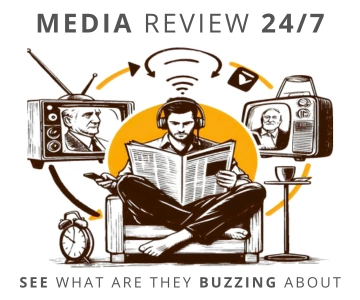 photo: picjumbo_com/cc0/Pixabay.com
photo: picjumbo_com/cc0/Pixabay.comBeginning online journalists and so-called content managers must remember that while they are writing for people, they must first convince the machine - the Google algorithm - to display their text to readers. Otherwise, they could write a brilliant article that nobody will read because it cannot be found in search engines.
To find out what mistakes website authors and creators of online content make, the industry experts were asked by Interaktywnie.com in the report "Search Engine Marketing 2017."
- A major sin is not planning space for meta tags. Without optimized meta tags, effective positioning cannot be discussed - explains Joanna Michalska, a positioning specialist at Verseo, in the report. - Coming across a CMS that does not allow for meta tag input is the realization of an SEO nightmare.
A very serious mistake that still occurs frequently is the underestimation of mobile device users. And, as experts quoted by Interaktywnie.com warn, this approach severely limits the ability to reach readers.
- Search engine algorithms reward sites that have a version tailored for smaller screens. The anticipated Google "Mobile-first" index is a response to current trends worldwide. Therefore, creating a site solely with desktop or laptop users in mind invites problems with positioning - warns Agata Jagiełło, head of marketing at SeoPilot. - When preparing a mobile or responsive site, we must also remember that SEO is currently moving away from technical aspects and is leaning towards usability and design. Designing the mobile version of the site, we need to remember that it should not only be mobile-friendly but also finger-friendly.
A common oversight is still the absence of headers on web pages. This element is incredibly important in positioning content. Without it, the author limits the ability to show the search engine what the prepared content is about, which in turn will affect organic results. Experts therefore remind that each page of the site should have a unique title, and they should not repeat.
The same issue arises with the robots.txt file, or rather the frequent lack of it. Such a file helps search engine robots understand the structure of the site. This allows us to hint which elements are important and which should be skipped.
- The content on the page must be useful. Simply placing keywords is not enough - summarizes Agata Jagiełło from SeoPilot quoted in the report. - Content is king, but quality is queen! So let`s not forget that when creating content for the site.
- A key issue in this topic, already at the planning stage of the website, is to consider how to design the site with SEO in mind. It would be a significant mistake to design the site and assume that we will think about SEO after launching the site - warns Dawid Ochab from www.daob.pl. - Many things cannot be corrected or changed later. Of course, to plan this correctly, one needs solid knowledge and a well-thought-out strategy.
***
The entire report "Search Engine Marketing 2017" can be downloaded for free from Interaktywnie.com.
COMMERCIAL BREAK
New articles in section Skills and knowledge
War reporter in the new reality. Evolving techniques, same purpose
KFi
What happens when war breaks out just across the border and journalists aren't ready? Polish reporters faced that question after Russia invaded Ukraine in 2022. Lacking training, they improvised: blurred details, hid names, and balanced trauma with truth.
A heuristic trap in media coverage. How loud headlines boost fear
Bartłomiej Dwornik
A negative message that rests on emotion lifts the sense of threat by 57%. Why do reports of a plane crash drive investors away from airline shares? Why do flood stories spark worry about the next deluge? The pattern is irrational yet clear and proven.
How LLMs are reshaping SEO. Smart content strategies for the age of AI
BDw
For years, SEO was a fairly predictable game. Pick the right keywords, optimize your content, and watch your website climb the rankings. But today, a silent revolution is underway - and it`s being led by large language models (LLMs) like ChatGPT, Claude, Gemini, and DeepSeek.
See articles on a similar topic:
Readability: Tools for Journalists to Enhance Text Clarity
Bartłomiej Dwornik
Even the most substantive content must be presented in an accessible and visually appealing way. First, so the reader can understand it. Second, to be easy on the eyes. In both cases, machines can help. Here are some tools for measuring text readability that every journalist might find useful.
Visual tricks. How to influence people with color, shape and composition
Bartłomiej Dwornik
The human brain supposedly processes images up to 60,000 times faster than words. Bright colors catch the eye more - but only under certain conditions. Few people can resist the "Apache Method," and a bearded man sells better. Here are some tricks for graphical-optical mind hacking.
On TikTok, Music Rules. Three Tips from an Expert on How to Leverage It
BRM
Music dominates TikTok – more specifically, well-chosen music, as it often determines the success of a video, educational campaign, or advertisement. How should a company select music for TikTok content? Tips from Wojciech Psiuk, music supervisor from Sirens.
Max Weber's Theory of Political Sociology
Krzysztof Dowgird
Max Weber, a German sociologist who lived from 1864 to 1920, was undoubtedly the greatest non-Marxist sociologist of political relations. He had a tremendous and enduring impact on many branches of social sciences, including the sociology of political relations.





























